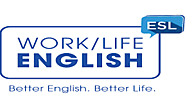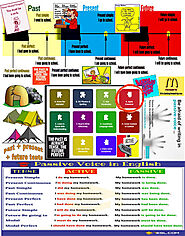-
About
- About Listly
- Community & Support
- Howto
- Chrome Extension
- Bookmarklet
- WordPress Plugin
- Listly Premium
- Privacy
- Terms
- DMCA Copyright
- © 2010-2025 Boomy Labs

 WorkLife English
WorkLife English
Listly by WorkLife English
Work/Life English is dedicated to improving the lives of native and non-native English language learners.

Work/Life English is dedicated to improving the lives of native and non-native English language learners. We offer a comprehensive range of fun, effective English language improvement lessons, strategies, and activities to help adult education ESL educators successfully engage their English language students and improve their English competencies.

Work/Life English offers ESL printable grammar worksheets and lesson plans to engage ESL students using visuals, puzzles, activities, and frequently asked questions. Our free ESL Printable Worksheets can be downloaded and used by students and teachers as reference material or handouts in the classroom.

ESL, ELT; English Through Citizenship / a Journey Through America: The Game with Civics & (Sheltered) Social Studies Content + Templates. Attain & Share Knowledge of Course Content & Subject Matter Through Question & Answer Games.
Sometime in the 20th Century, teachers, administrators, materials developers, and publishers got the idea that English instruction could be divided into separate language skills, abilities, or competencies. Listening + Speaking were classified as “Oral Language Skills.” Reading + Writing became “Written Language Skills.
Usually, “literacy” means competency in reading & writing print matter. Even so, much of the reading people do in everyday life is either visual only or text combined with images. Discussed in the article Develop Visual Literacy, the skills needed to comprehend and make good use of largely visual matter.
Why does humor almost always come first in these blog posts? To help you, the reader, to relax about the "serious educational stuff" that follows.
So here's how (the [mis]pronunciation of) American-English vowel sounds can be funny. Explanations with phonetic or respelling sound symbols are included.
Which of these four reasons best describes your own experience or views?
First, you hate being corrected by arbitrary autocrats who would rather feel superior to you than communicate effectively with you.
Second, any statement beginning with “I hate” gets you attention—and maybe even sympathy or comradery. And it may help your psyche.
To read more, visit us: https://worklifeenglish.com//blogs/news/hate-english-grammar-here-are-four-reasons-why-you-might
So what's funny about consonants? There's a plethora of tongue twisters, puns, letter omissions, word substitutions, and other humor that will evoke at least a chuckle. Do you get the joke of these six items? (Feeble attempts at explanation follow.)
To read more, visit us: https://worklifeenglish.com/blogs/news/care-about-consonants

Many of our ESL and Literacy improvement connections have been talking about how much more difficult this year is for teaching youth and adults than those before it. And it is especially challenging for educators starting their careers teaching ESL and Literacy improvement.
At Work/Life English, we like to help make life for Adult Education instructors less stressful, easier, and more enjoyable. First, we’ll share some de-stressors that may help, and then some free Adult ESL lessons.
In this blog by Arthur Rubin, an MSW, COO, and a Partner, we will look at ways to cope with this educational year and ready-to-use ESL Literacy Improvement curriculum materials by Elaine Kirn-Rubin that will save you time and the effort of reinventing the wheel. Read our blog here: https://worklifeenglish.com/blogs/news/surviving-a-typical-day-in-a-teacher-s-life-1
Just as in the acquisition of other language skills, in writing (printing, cursive, typing, texting), it makes sense to start with the smallest pieces of language (symbols, including letters and numerals), put them together into words or other chunks or pieces, move on to phrases to join in sentences, and progress gradually to connected text.Here’s what some of these little pieces of writing might look like.
In any sequence of English-language improvement, Grammar (i.e., the study of how utterances and sentences are constructed based on forms and syntax) is fundamental. This article is the first segment of Parts & Pieces of our Apply Grammar Collection. Numbered D-00, check out the complete article here: https://worklifeenglish.com/blogs/news/how-to-put-together-parts-pieces-that-make-language-work
Are you a teacher looking to incorporate culture into your ESL classes? If so, this post is for you! Integrating culture into your lessons can be a great way to engage students in the learning process and make them feel more connected to the language they are studying.

Finding a job can be challenging for anyone, but it can be especially difficult for ESL learners who are not familiar with the employment process. In this blog, we'll provide some helpful tips and insights into understanding job ads, using social security numbers, and filling out job applications.
Discover effective strategies for ESL instructors to teach spelling to students. Improve accuracy with engaging spelling exercises, repetition, and technology like Grammarly and Spellcheck. Click the link for comprehensive resources on phonics and spelling in ESL learning. Boost academic performance today!

Time for a spelling bee! Let's see if your students are able to guess this word correctly. Start with these words, and then visit our website for even more fun spelling activities: https://worklifeenglish.com/collections/do-phonics-and-spellings
For ESL speakers, navigating the healthcare system and understanding medical terminology can be daunting. In this blog, we will discuss why health literacy is important for ESL speakers, provide strategies for teaching health literacy to your students, and explore how to create a comprehensive health literacy curriculum. With these resources, you can help your students become informed and empowered healthcare consumers.
